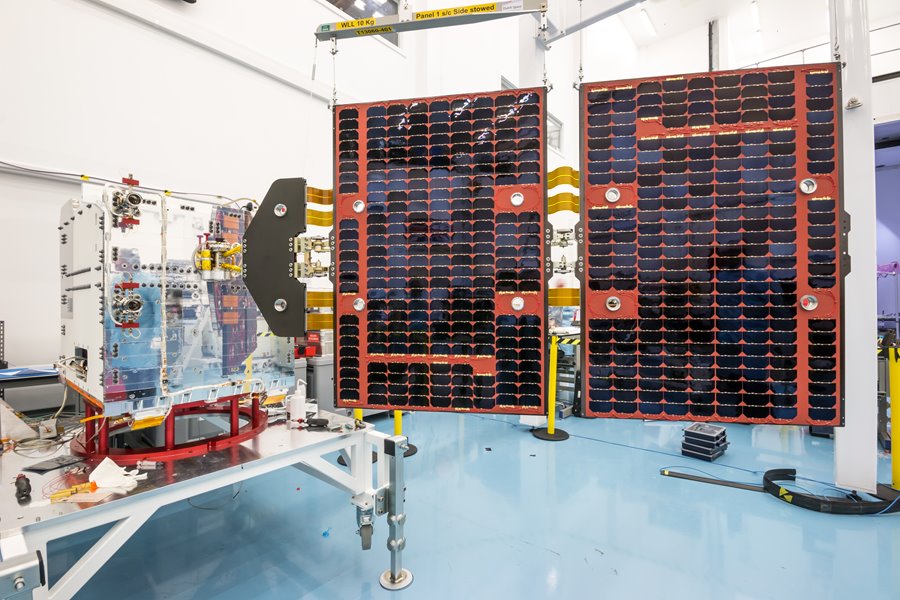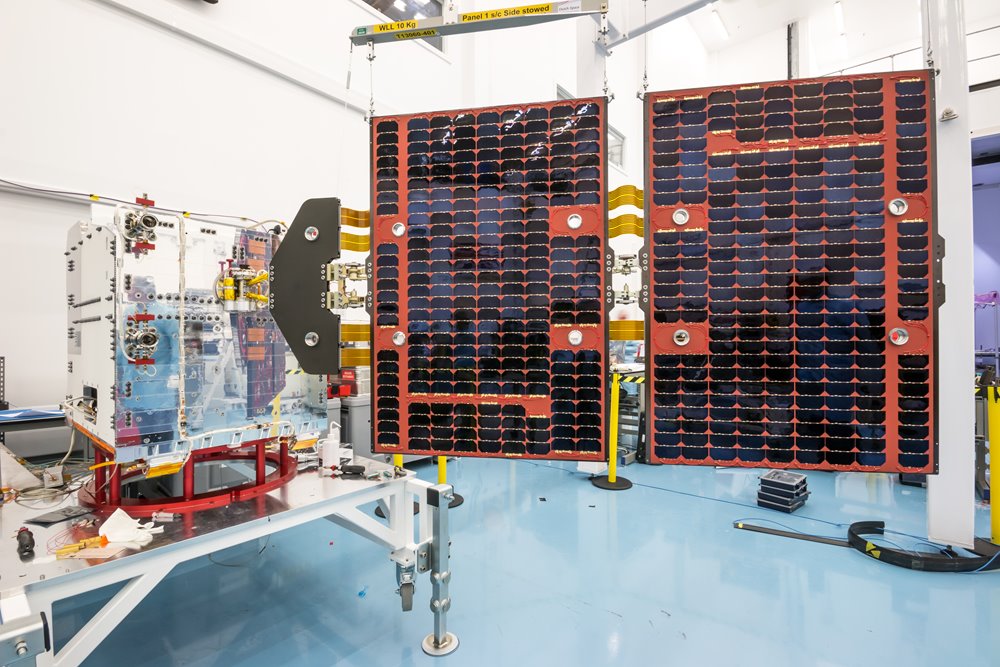
The successful launch on 24 June 2019 (EST) of 6 satellites for the FORMOSAT-7 joint US-Taiwanese weather forecasting constellation marks the start of another SSTL-enabled space mission, a cause for celebration at SSTL’s UK HQ. The launch on the SpaceX Falcon Heavy rocket from the Kennedy Space Centre was attended by SSTL staff including Managing Director, Sarah Parker who said “We are very proud of our role as space mission enablers and, hot on the heels of TeleSat LEO Phase 1 satellites’ first ever demo of 5G connectivity, we are delighted that our smallsats expertise has once again helped our customers achieve their ambitions. We congratulate our customers, NSPO in Taiwan, and NOAA in the United States on the successful launch of their constellation and look forward to following their mission journey as they move through commissioning and into start of operations.”
FORMOSAT-7, also known as COSMIC-2 in the US, is a joint constellation meteorological satellite mission between Taiwan and the United States for observing and monitoring the global meteorology, climate, and ionosphere. In addition to two science payloads for detecting ionospheric data, each of the 6 satellites in the constellation is carrying an advanced GNSS receiver to low-inclination-angle orbits and will collect atmospheric data at low and mid latitudes to provide sounding data to improve regional and global weather forecasting. The processed data will be provided by two data processing centers located in Taiwan and USA.
SSTL provided the platforms for this next-generation Global Navigational Satellite System Radio Occultation data constellation, enabling our customer, NSPO of Taiwan, to continue its participation in an internationally recognised science mission at the best possible value for money. Collaborating with SSTL also enabled NSPO’s engineers to work hand-in-hand with SSTL’s engineering team throughout the programme, gaining world-class small satellite expertise in the full range of satellite mission capability including design, assembly, test and in-orbit operations.
As a continuation of this programme NSPO is now developing its own FORMOSAT-7 platform, named TRITON, using some of SSTL’s hardware under license in its own satellite structure and avionics. The satellite is scheduled to be launched in 2021.
The first fully integrated and tested satellite for the FORMOSAT-7 constellation was completed at SSTL in the UK and delivered to NSPO in Taiwan in 2015. The other 5 satellites in the constellation were manufactured and assembled by SSTL in the UK and delivered to Taiwan where payload assembly and testing was completed at NSPO’s facility as part of the knowledge transfer programme. The payloads for the satellites were provided by NASA (JPL), the US Air Force and the University of Texas and were integrated to the completed platforms by the NSPO team, with support from SSTL. SSTL engineers also provided launch site support and are providing technical in-orbit operational support to NSPO’s team who will be performing in orbit commissioning of the spacecraft from their control centre in Taiwan.
The launch of the FORMOSAT-7 satellites was managed by the US Air Force STP-2 programme.
ENDS
Notes to editor:
Telesat Leo Phase 1 – the 5G test
The 5G connectivity test, which was conducted at the University of Surrey’s 5G Innovation Centre in May 2019, connected their 5G test network to the Telesat LEO Phase 1 satellite for a limited series of tests, which represented the World’s first 5G connection over a LEO satellite. Test results confirmed latencies of between 18-40mS and throughputs up to 60Mbps for the most favourable visible orbits. This enabled backhaul with video services of both 4k and 8k TV of excellent quality to be demonstrated as well as internet connections.
The Telesat Leo Phase 1 spacecraft was manufactured by SSTL for Telesat, a leading global satellite operator, as part of a test and validation phase for an advanced, global LEO satellite constellation. The spacecraft utilises heritage COTS components and was built and tested in just 17 months, and launched in 2018. The communication payload consists of a Ka-band bent pipe which includes the provision for Ka-band TTC allowing the customer to directly operate the spacecraft from their own groundstation.
Full size accompanying images for this press release can be downloaded at the bottom of this page.
Press Contacts:
Joelle Sykes, PR Manager, SSTL
Tel: +44 (0)1483 804243
Mob: 07775 000853
Email: j.sykes@sstl.co.uk
About SSTL
Surrey Satellite Technology Limited (SSTL) is the world's leading small satellite company, delivering operational space missions for a range of applications including Earth observation, science, communications, navigation, in-orbit debris removal and servicing and beyond Earth infrastructure. SSTL designs, manufactures and operates high performance satellites and ground systems for a fraction of the price normally associated with space missions, and employs 380 staff working on turnkey satellite platforms, space-proven satellite avionics, optical instruments and new mission concepts.
Since 1981, SSTL has built and launched more than 60 satellites for 20 international customers, as well as providing training and development programmes, consultancy services, and mission studies for ESA, NASA, international governments and commercial customers. Our innovative approach is changing the economics of space.
Headquartered in Guildford, UK, SSTL is part of Airbus.
Download PDF